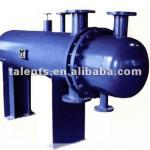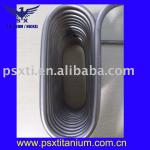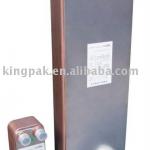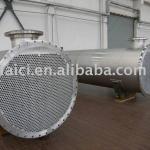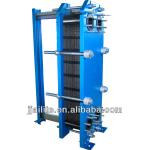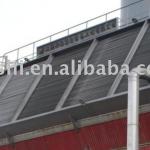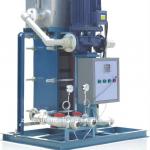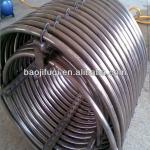U-Type tube heat exchangers
| Condition:New | Place of Origin:Shandong China (Mainland) | Brand Name:HENGHE | Model Number:CWHE-563 |
| Structure:Tube Heat Exchanger | Liquid Flow Rate:5~150 T/H | Maximum Working Pressure:1~15 Mpa | Voltage:As Project needing |
| Weight:5600 kg | Dimension(L*W*H):D: 2300mm L:9500mm | Power(W):Up to 2000 KW | Certification:CCC,CE,UL,ISO ASME Tube heat exchanger |
| Warranty:10 years | After-sales Service Provided:Engineers available to service machinery overseas | Corrosion Resistance:3mm | Anti-quake Design:Firstly |
| Material:SS steel &C.S. steel & Copper&Tianium |
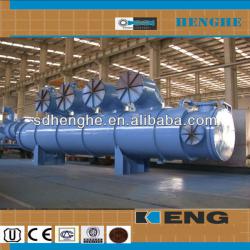
tube heat exchangers
HENGHE FACTORY DESIGN
SHELL AND TUBE HEAT EXCHANGER
Shell and tube heat exchangers consist of a series of tubes. One set of these tubes contains the fluid that must be either heated or cooled. The second fluid runs over the tubes that are being heated or cooled so that it can either provide the heat or absorb the heat required. A set of tubes is called the tube bundle and can be made up of several types of tubes: plain, longitudinally finned, etc. Shell and tube heat exchangers are typically used for high-pressure applications (with pressures greater than 30 bar and temperatures greater than 260 °C).
§ Tube diameter:
Using a small tube diameter makes the heat exchanger both economical and compact. However, it is more likely for the heat exchanger to foul up faster and the small size makes mechanical cleaning of the fouling difficult. To prevail over the fouling and cleaning problems, larger tube diameters can be used. Thus to determine the tube diameter, the available space, cost and the fouling nature of the fluids must be considered.
§ Tube thickness:
The thickness of the wall of the tubes is usually determined to ensure:
§ There is enough room for corrosion
§ That flow-induced vibration has resistance
§ Axial strength
§ Availability of spare parts
§ Hoop strength (to withstand internal tube pressure)
§ Buckling strength (to withstand overpressure in the shell)
§ Tube length:
heat exchangers are usually cheaper when they have a smaller shell diameter and a long tube length. Thus, typically there is an aim to make the heat exchanger as long as physically possible whilst not exceeding production capabilities. However, there are many limitations for this, including the space available at the site where it is going to be used and the need to ensure that there are tubes available in lengths that are twice the required length (so that the tubes can be withdrawn and replaced). Also, it has to be remembered that long, thin tubes are difficult to take out and replace.
§ Tube pitch:
when designing the tubes, it is practical to ensure that the tube pitch (i.e., the centre-centre distance of adjoining tubes) is not less than 1.25 times the tubes' outside diameter. A larger tube pitch leads to a larger overall shell diameter which leads to a more expensive heat exchanger.
§ Tube corrugation:
this type of tubes, mainly used for the inner tubes, increases the turbulence of the fluids and the effect is very important in the heat transfer giving a better performance.
§ Tube Layout:
refers to how tubes are positioned within the shell. There are four main types of tube layout, which are, triangular (30°), rotated triangular (60°), square (90°) and rotated square (45°). The triangular patterns are employed to give greater heat transfer as they force the fluid to flow in a more turbulent fashion around the piping. Square patterns are employed where high fouling is experienced and cleaning is more regular.
§ Baffle Design: baffles are used in shell and tube heat exchangers to direct fluid across the tube bundle. They run perpendicularly to the shell and hold the bundle, preventing the tubes from sagging over a long length. They can also prevent the tubes from vibrating. The most common type of baffle is the segmental baffle. The semicircular segmental baffles are oriented at 180 degrees to the adjacent baffles forcing the fluid to flow upward and downwards between the tube bundle. Baffle spacing is of large thermodynamic concern when designing shell and tube heat exchangers. Baffles must be spaced with consideration for the conversion of pressure drop and heat transfer. For thermo economic optimization it is suggested that the baffles be spaced no closer.

| Packaging Detail:Tube heat exchanger Non-package,iron or wooden pedestal,suitable for inland or marine transportation. |
| Delivery Detail:Tube heat exchanger 20-30 day after the contract come into valid |







